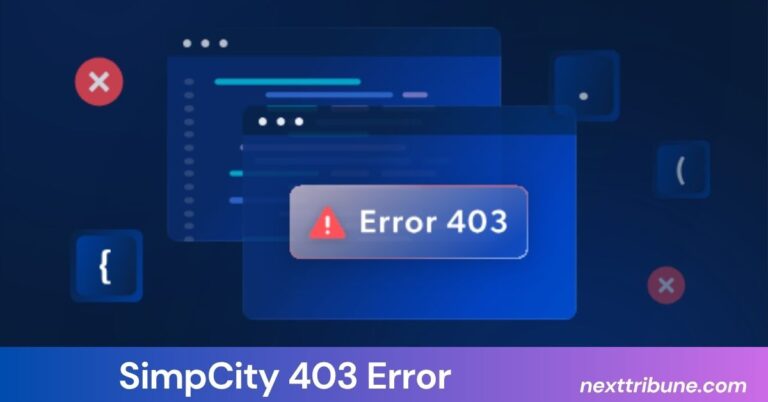
In the world of retail and finance, ensuring compliance with anti-money laundering (AML) regulations is of utmost importance. One company that takes this responsibility seriously is Walmart, which offers an Anti-Money Laundering (AML) assessment for its employees. The Walmart Anti Money Laundering CBL answers and the associated assessment test Walmart Anti Money Laundering CBL answers are essential tools for educating employees on the company’s stance against illegal financial activities.
In this article, we will delve deeply into the Walmart Anti Money Laundering CBL answers, why they are critical for employees, and provide valuable insights to help you prepare for the test. This comprehensive guide will cover key aspects of anti-money laundering, how Walmart approaches the topic, and how the training ensures that employees are well-prepared to handle any suspicious financial activity.
What Is the Walmart Anti Money Laundering CBL?
Before we dive into the details of the Walmart Anti Money Laundering CBL answers, it’s essential to understand what the term “CBL” stands for. CBL is an acronym for Computer-Based Learning. Walmart’s Anti Money Laundering CBL refers to a series of training modules designed to educate employees on the importance of AML practices and compliance.

The Walmart Anti Money Laundering CBL is part of Walmart’s broader efforts to prevent illegal activities like money laundering and terrorist financing. Money laundering is the process of making illegally obtained money appear legitimate, and the Walmart Anti Money Laundering CBL answers help employees learn how to spot signs of such activities.
Walmart is committed to upholding the law and ensuring that its operations are transparent and compliant with relevant regulations. To this end, Walmart has developed a training program that is mandatory for many employees, particularly those who are in direct contact with financial transactions or who are involved in any financial services at the company.
The Importance of Anti-Money Laundering at Walmart
Walmart is one of the largest retailers in the world, and as such, it is crucial that it adheres to the laws that prevent illegal activities like money laundering. Money laundering poses a significant threat to the global economy, and any company that operates on a large scale needs to ensure it is not being used to facilitate criminal activities.
The training provided by the Walmart Anti Money Laundering CBL covers various aspects of financial crime, including understanding the risks associated with money laundering and the role each employee plays in detecting and reporting suspicious activities. By taking the Walmart Anti Money Laundering CBL and reviewing the assessment test Walmart Anti Money Laundering CBL answers, employees are better prepared to recognize the signs of illicit financial transactions and prevent Walmart from unknowingly facilitating money laundering.
Also Read: Unlocking Efficiency with the Reflexis App: A Comprehensive Overview
How Walmart Approaches Anti-Money Laundering
Walmart follows a robust framework for tackling money laundering and other financial crimes. The company adheres to several regulations, including the Bank Secrecy Act (BSA) and the USA PATRIOT Act, both of which require financial institutions, including companies like Walmart, to put in place measures to prevent and report money laundering activities.
Walmart’s approach includes:
- Employee Training: Employees are regularly trained on how to detect and handle potential money laundering situations. This training is part of the Walmart Anti Money Laundering CBL and is designed to ensure that everyone, from cashiers to managers, understands their role in safeguarding the company from financial crimes.
- Transaction Monitoring: Walmart employs transaction monitoring systems that analyze transactions in real-time to identify suspicious activity. If a transaction seems suspicious, it is flagged and investigated further.
- Reporting Suspicious Activity: Walmart has clear guidelines on how to report any suspicious activity to the relevant authorities. Employees are encouraged to report concerns without delay, and all reports are taken seriously.
- Compliance with Regulations: Walmart ensures that it complies with all local and international laws related to anti-money laundering. This includes adhering to specific regulations in countries where the company operates.
What Does the Walmart Anti Money Laundering CBL Answer Test Involve?
The assessment test Walmart Anti Money Laundering CBL answers is part of the training process. This test evaluates employees’ knowledge and understanding of the material covered in the training modules. The purpose of the test is to ensure that employees are adequately prepared to handle situations where money laundering might be suspected.
The test typically covers the following areas:
1. Definition of Money Laundering
The test will ensure that employees understand what money laundering is and why it is illegal. Employees will be asked to identify the three stages of money laundering: placement, layering, and integration.
2. Signs of Suspicious Activity
Employees are taught how to recognize signs of suspicious activity, such as large cash transactions, frequent deposits just below reporting thresholds, or unusually complex transactions that seem unnecessary.
3. Reporting and Documentation
Walmart employees need to understand how to properly report suspicious activity. The test covers the procedures for documenting and reporting concerns, including who to contact and what information is necessary.
4. Walmart’s Role in Preventing Money Laundering
Employees will learn about the company’s responsibility to prevent illegal financial activities. The training emphasizes how each employee, no matter their role, plays a part in keeping Walmart compliant with AML laws.
5. Regulations and Compliance
The test will ensure that employees are familiar with the regulations that govern anti-money laundering practices, including the Bank Secrecy Act and the USA PATRIOT Act.
Also Raed: Hunting Dog Killed My7 Turkey Texas: A Heartbreaking Tale and Important Lessons
How to Prepare for the Walmart Anti Money Laundering CBL Answers Test
Preparation for the Walmart Anti Money Laundering CBL answers test involves thoroughly studying the materials provided during the training. Here are some tips to help you succeed:
1. Pay Attention to the Training Modules
The Walmart Anti Money Laundering CBL program consists of several online training modules that cover key topics related to money laundering. Make sure to carefully read through all the materials, as the answers to the test are drawn directly from these resources.
2. Understand the Key Concepts
Ensure you have a solid understanding of key terms and concepts like money laundering, financial crime, and regulatory compliance. Understanding these terms will make it easier to answer questions on the test.
3. Review Case Studies
Walmart’s CBL often includes real-world examples and case studies of money laundering attempts. Reviewing these examples will give you a clearer idea of what to look for in your role.
4. Take Practice Quizzes
Some employees may have access to practice quizzes before taking the official test. If you do, take full advantage of them to familiarize yourself with the types of questions that may appear on the test.
5. Seek Clarification
If you have any doubts about the training material, do not hesitate to ask your supervisor or contact the appropriate team for clarification. It’s essential to have a complete understanding of the material before taking the test.
Why Walmart Anti Money Laundering CBL Answers Are Critical
The Walmart Anti Money Laundering CBL answers are essential because they help ensure that Walmart complies with AML regulations. These regulations are put in place to prevent illegal activities, such as terrorist financing and drug money distribution, that could harm the global economy.
Without proper training, employees may miss red flags or fail to report suspicious activities, which could result in legal consequences for Walmart. By taking the training and mastering the assessment test Walmart Anti Money Laundering CBL answers, employees become a critical line of defense against these illegal activities.
Also Raed: Thenewjobz.com: Revolutionizing Job Search for Modern Professionals
Frequently Asked Questions (FAQs)
What is the Walmart Anti Money Laundering CBL test?
The Walmart Anti Money Laundering CBL test is an assessment that evaluates employees’ knowledge of money laundering prevention procedures. It’s part of Walmart’s training program to ensure that employees are well-versed in detecting and reporting suspicious activities.
Is the Walmart Anti Money Laundering CBL test difficult?
The difficulty of the test depends on how well employees engage with the training materials. If you pay close attention to the modules and understand key concepts, the test should be manageable.
Why is the Walmart Anti Money Laundering CBL test important?
This test ensures that Walmart complies with anti-money laundering regulations and that employees are capable of recognizing and reporting suspicious activity, helping prevent financial crimes.
How often do employees need to take the Walmart Anti Money Laundering CBL training?
Employees are typically required to take the training on an annual basis or whenever there are updates to the company’s AML policies or regulations.
What happens if I fail the Walmart Anti Money Laundering CBL test?
If you fail the test, you may be required to retake the training and test until you pass. Walmart takes the matter seriously, and ensuring that employees understand AML practices is vital for maintaining compliance.
Conclusion
The Walmart Anti Money Laundering CBL answers are a critical part of Walmart’s commitment to preventing illegal financial activities. By providing employees with the necessary training and resources, Walmart helps protect the company and its customers from the dangers of money laundering. Taking the assessment test Walmart Anti Money Laundering CBL answers seriously ensures that employees can detect suspicious activities and contribute to the overall goal of maintaining a safe, compliant retail environment. By preparing thoroughly for the test, employees can play a key role in upholding Walmart’s strong reputation for ethical practices.



